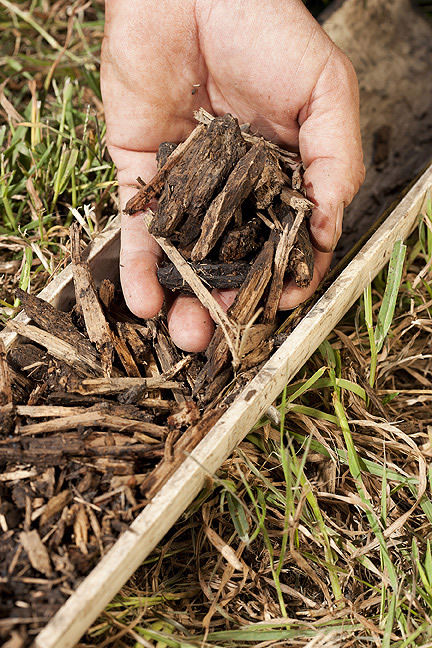Advancing constructed wetlands and denitrifying bioreactors to abate edge-of field nitrogen losses
Comparing Carbon Substrates for Denitrification of Subsurface Drainage Waters
Situation: In the Midwestern U.S., where the landscape is dominated by agriculture, water draining off agricultural fields can have high concentrations of nitrogen (N). Bioreactors, with supplemental carbon, offer the potential to remove N via denitrification from runoff before the water enters surrounding streams. The relative value of different carbon sources to enhance denitrification was uncertain.
Actions: A laboratory study by Iowa State University and the USDA- Agricultural Research Service compared the effectiveness of four different organic materials in maximizing the denitrification process in bioreactors. The materials used were woodchips, woodchips with soybean oil, cornstalks, and cardboard fibers.
Take-home message: 
- All carbon substrates had denitrification removing greater than 96% of the nitrate.
- Nitrogen removal rates from highest to lowest were: cornstalks, cardboard fibers, woodchips with soybean oil, woodchips
- While cornstalks supported the highest rate of denitrification, the other materials removed N at a steady rate and would probably continue to remove N for a longer period of time than cornstalks.
For more information:
- Greenan et al. 2006. Comparing Carbon Substrates for Denitrification of Subsurface Drainage Waters. Journal of Environmental Quality. 35:824–829
- Email Dr. Tom Moorman at tom.moorman@ars.usda.gov